Four years in the making…..
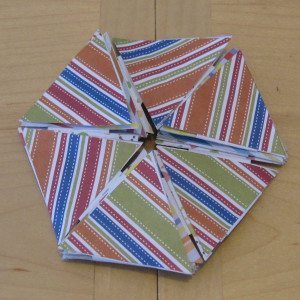
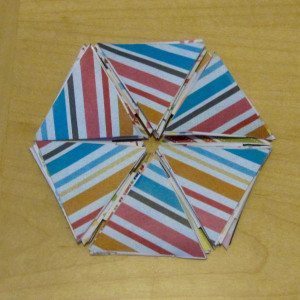
In 2012 I cut out triangles of paper to glue together into a dodecahexaflexagon (documented in a post about a smaller flexagon). I also found instructions: scanned typed instructions from David Pleacher, and instructions incorporating triangle orientation from Kathryn Huxtable.
A dodecahexaflexagon is a 12-faced (the dodeca-, as you will know if you’ve read The Phantom Tollbooth, or been a long-time reader of this blog), 6-sided (hexa-) flexagon; each face is made from 6 equilateral triangles. I had cut each face from a different scrapbook paper, and I had small squares of white paper to serve as hinges.
In the summer of 2014 I dug out the paper pieces and started gluing them together. I glued one side of the strip together in an evening, but didn’t get back to the other side until now. The second side was quite easy, since on side 1 the faces were scattered around and on side two they were much more orderly.
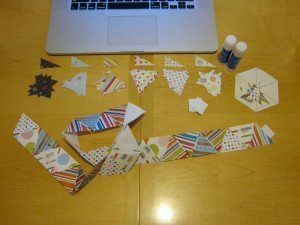
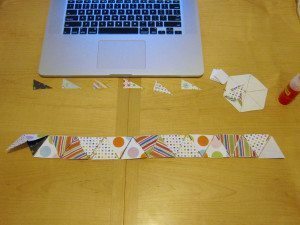
There was some confusion in the folding and a length of time before I found all 12 faces. I didn’t know the trick! To flex, you’ll pinch the hexagon so that three of the lines between triangles are outward corners and three are inward corners (see photo below). Which edges are inward and which outward will change which face you see next (in some cases you’ll only be able to flex in one configuration). To see all of them, you can simply pinch out the same corner over and over again, only rotating to a neighboring corner if it is impossible to flex the first one. I found hanging on to the same pair of faces with one hand, doing the rest of the work with the other, was the best way to enact that. It is awkwardly thick and I’m glad I spaced the triangles apart a bit with the paper squares.
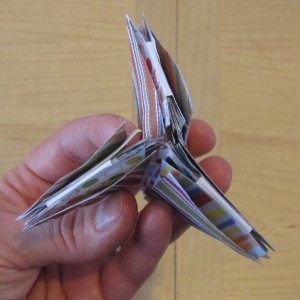
Each face is connected to at least two additional faces. I haven’t explored thoroughly enough to know whether I found the full set of options, but I made a little map and had each face connected to 2, 4, or 6 others, with complicated interconnection. This lines up with a diagram on Kathryn Huxtable’s general flexagon page, where I also learned about the “pinch one corner repeatedly” method of finding all the faces.
Want more flexagons? Harold McIntosh has an interesting read about the history and theory of flexagons, and Vi Hart’s videos and more (the first of which inspired my flexagon crafting) are all on a hexaflexagon page of puzzles.com. Woolly Thoughts, a bastion of mathematics-inspired crafting, has a page of crochet and knit flexagon cushions.